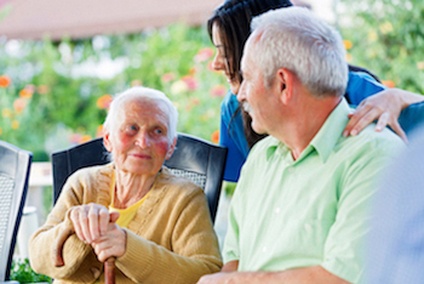|
|
Last Modified on Aug 03, 2016
Making the decision to place your elderly loved one in a nursing home is a difficult one. For many, the stress of searching for the best facility borders on overwhelming.
There are more than 2.1 million reported cases of elder abuse in the U.S. each year. Many facilities with documented incidents of elder abuse have beautiful websites and heartwarming advertisements that mask the shortcomings of their services.
To ensure your loved one receives the care they need, you should always take an in-person tour of any nursing home you are considering. While you’re standing at the receptionist’s desk and walking the halls, look, listen, and sniff for the signs of an environment that may suggest an elevated risk of abuse or neglect to the facility’s residents:
Strong Odors
Your nose can lead the way in recognizing whether a facility is providing proper care and hygiene assistance to its residents. A strong smell of feces or urine is an instant red flag. Likewise, an overpowering scent of disinfectant is equally alarming, as it might mean the facility is covering a problem rather than correcting it.
Minimal Acknowledgment
Kindness is a key component of caregiving. Even in a busy and fast-paced facility, you should be greeted not just politely, but warmly and genuinely. During your walk-through, ask any and all questions you might have, with the expectation that your guide will gladly and thoroughly answer them.
Clutter
Tidiness and cleanliness go hand in hand. Most facilities will at least make the effort to keep the entrance and reception area clean. However, if you notice loose trash, paperwork, or belongings in interior common areas or in residents’ rooms, this is a sign that the facility might not be as clean as it appears and may suggest further systemic dysfunction.
Safety Hazards
A quality nursing facility makes safety the number one priority at all times. Be sure that the care home you are considering has adequate railings, walkways, and signage.
Signs of Restraint
Try to observe any residents that you pass by. Do you see signs of restraint, such as bruises or cuts on their body, or chest straps on their wheelchair? Restraint is sometimes warranted. However, a high concentration of restrained residents in a facility is often the marker of inadequate number of staff members to attend to the residents’ safety and needs.
Strained Communication
Some facilities operate with a huge language barrier between residents and staff, which can often lead to visible irritation on both sides. Standoffish behavior in residents and/or short-tempered responses from staff can be a sign of residents’ needs not being met or their voices not being heard.
Unhappy Employees
Caregiving takes time and commitment. You can tell a lot about a nursing home simply by the tone and body language of its employees. In well-run facilities, employees thrive and their passion shines through. In struggling facilities, employees will often appear visibly tired, burnt out, or irritable.
Lack of Qualified Nurses
Believe it or not, some nursing homes do not have a Registered Nurse on staff. While most of the direct care will be delivered by Certified Nursing Assistants, studies link the higher proportion of RNs to residents to higher quality care. Don’t be afraid to ask about the nurse-to-resident ratio.
Bad “Gut Feeling”
Trust your intuition when touring a nursing home. Even if you can’t find anything blatantly wrong with the facility but still get a “bad feeling,” do a little extra research by:
- Checking online for reviews of the facility
- Contacting your local long term care Ombudsman for copies of State Nursing Home Inspection Reports
- Check Medicare’s Nursing Home Compare website to learn about the home’s ownership structure, size, locations, and other basic information
Identifying Elder Abuse and Neglect
Elder abuse is avoidable when you take the time to vet a reputable nursing facility. Nevertheless, you should still keep a watchful eye even after choosing a facility. Know the signs of elder abuse, and consult an elder abuse attorney at Belgum, Fry & Van Allen if you suspect that abuse or neglect might be taking place.
By: Brian Van Allen






